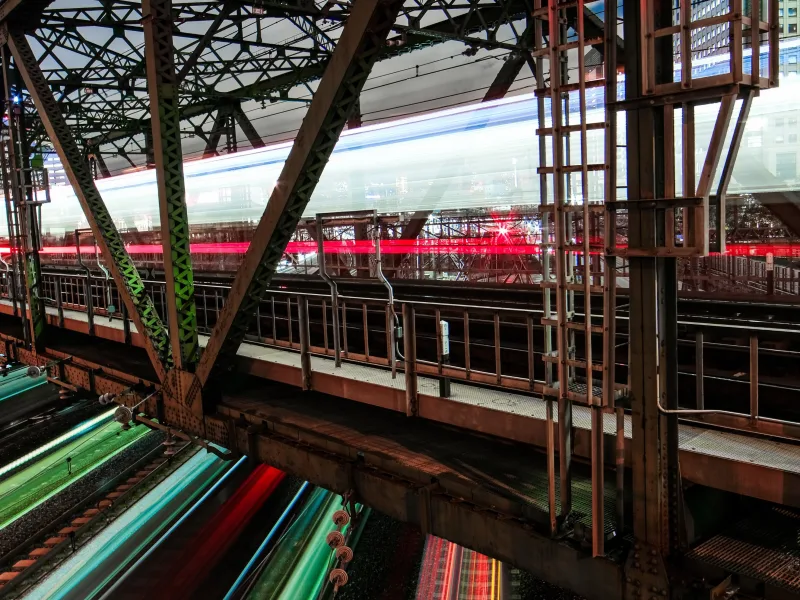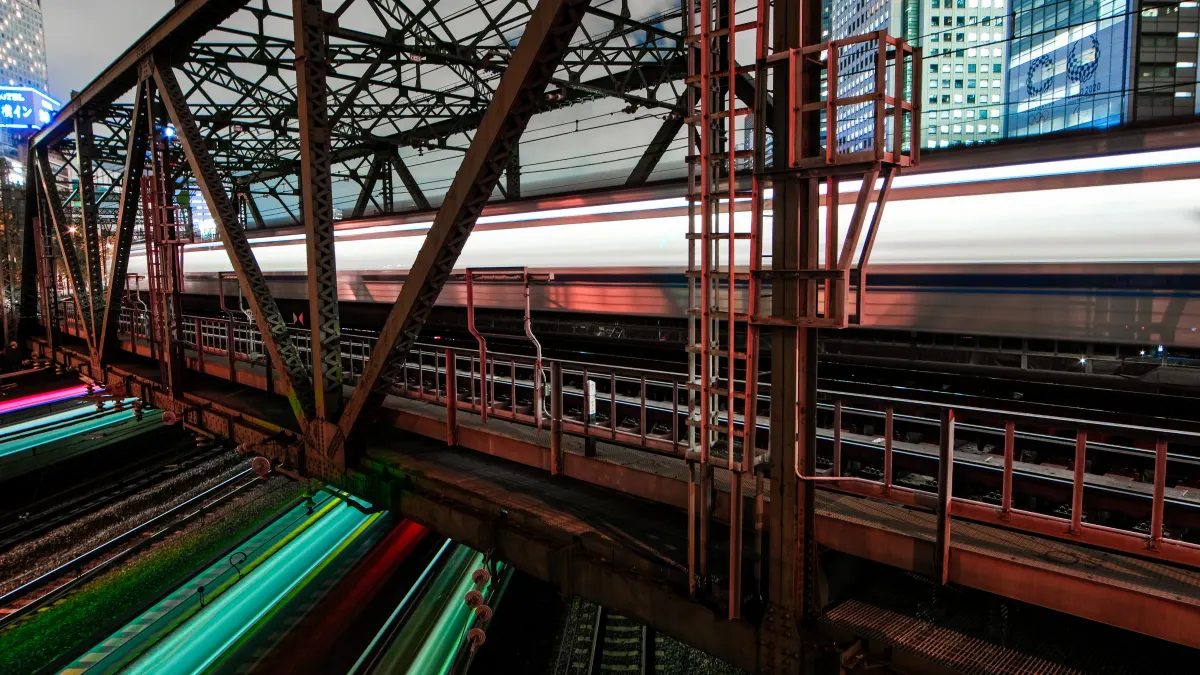Yatsuyama Bridge in Shinagawa may seem like a modest overpass at first glance, but for photographers—especially rail enthusiasts—it offers one of Tokyo’s most dynamic urban compositions. Positioned just south of Shinagawa Station, the bridge overlooks a dense, multi-layered rail junction where commuter trains, shinkansen, and the Keikyu Line intersect in synchronized motion. The scene is especially compelling at night, when long exposure shots reveal glowing light trails from both upper and lower tracks, creating a rare dual-direction visual effect. The S-curve of the Keikyu Line adds strong diagonal lines to frame fast-moving trains, while the backdrop of sleek infrastructure provides a gritty yet elegant contrast—perfect for Tokyo night photography.

Beyond its visual complexity, Yatsuyama Bridge holds deep historical resonance—it stands near the site of Japan’s first railway overpass, dating back to 1872, and marks the entry to the former Shinagawa-shuku on the old Tokaido route. Yet for today’s photographers, its real draw lies in the constant movement and clean sightlines, ideal for handheld or discreet tripod setups. Morning light accentuates steel textures and motion, while late afternoons and evenings bring out the glowing geometry of Tokyo’s rail networks. Whether you’re a seasoned photographer or simply captivated by Tokyo’s energy, Yatsuyama Bridge offers an unmatched vantage point where the past and present of Japanese transit converge in every frame.












